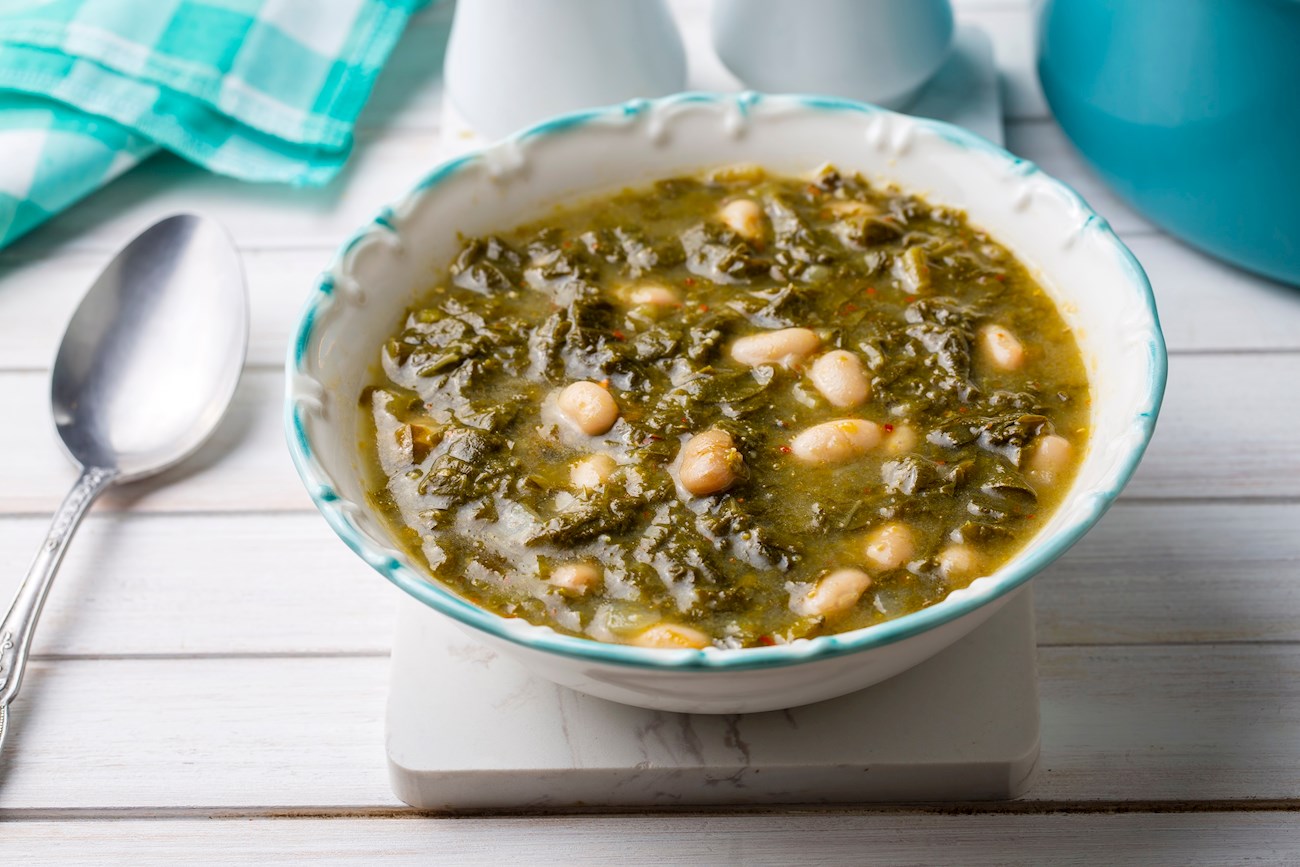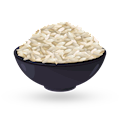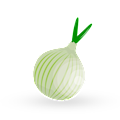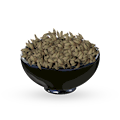MAIN INGREDIENTS
Mahluta is a traditional soup hailing from Türkiye. The soup is usually made with a combination of red lentils, onions, tomato paste, rice, olive oil, lemon juice, cumin, and salt. The onions are finely chopped and sautéed in olive oil until tender.
The tomato paste is added to the pot and cooked with the onions, followed by the washed and drained red lentils, rice, and water. The mixture is covered and simmered over low heat until both the lentils and the rice become fully cooked and tender.
Before serving, lemon juice, cumin, and salt are added to the pot, mixed, and the pot is then removed from the heat source.
MAIN INGREDIENTS
Karalahana Çorbası is a traditional soup from the Black Sea Region with kale as the primary ingredient. The name "karalahana" directly translates to "black cabbage" in Turkish, referring to the kale used in this dish. Apart from kale, the typical recipe also includes ingredients such as white beans, corn, onion, tallow/butter, and is seasoned with spices like red pepper flakes, red pepper paste, black pepper, and salt.
Meat, such as beef or lamb, can also be added, although the soup is traditionally vegetarian. Some recipes incorporate cornmeal or flour mixed with water to make the soup richer and creamy in texture. Regional varieties exist; the best-known are the ones from the cities of Ordu, Giresun, Rizu, and Gümüşhane.
MAIN INGREDIENTS
Toyga is a traditional soup made with a combination of chickpeas, dövme (wheat berries), water, flour, yogurt, and butter. In order to prepare it, chickpeas and dövme are cooked until tender, then gradually combined with a mixture of yogurt and flour.
The combination is cooked for a few more minutes, seasoned with salt, and sprinkled with a mixture of melted butter, crushed mint, and red pepper flakes before serving. The soup is traditionally served piping hot.
MAIN INGREDIENTS
İşkembe çorbası is a traditional tripe soup that is known as a great hangover cure. It consists of tripe, water, milk, flour, butter, and egg yolks. The soup is usually seasoned with salt and finished with red pepper, vinegar, and garlic, giving it a bold flavor.
It is recommended to serve the soup while still hot.
MOST ICONIC İşkembe çorbası
View moreMAIN INGREDIENTS
Tarhana çorbası is a popular Turkish soup made with tarhana dough, crushed tomatoes, chickpeas, chicken stock, butter, and pul biber red pepper flakes. When the consistency reaches the desired thickness, the soup is ready to be served, preferably piping hot.
Some people like to add ground meat in the soup, but it is completely optional. Tarhana çorbası is especially popular on cold winter mornings. If desired, garnish it with crumbled white cheese on top.
Şiveydiz is a traditional soup originating from Gaziantep. The soup is usually made with a combination of fresh green garlic, scallions, lamb, yogurt, chickpeas, butter, mint, chili flakes, salt, and pepper. The lamb and chickpeas are cooked in water, then mixed with the yogurt, onions, garlic, chili flakes, and seasonings.
Once cooked, the soup is mixed with butter-sautéed mint and served. The soup is often prepared in April and May, and it's believed that it helps cure the common cold.
MAIN INGREDIENTS
A great example of Turkish regional cuisine, Ezogelin çorbası is a hearty, mint-flavored soup made with red lentils, bulgur, pepper paste, and various Turkish spices. The origins of this classic Turkish winter dish are attributed to an unhappily married woman named Ezo who lived in the village of Dokuzyol near Gaziantep in the early 20th century.
It is believed that Ezo used to make this soul-warming soup in a desperate effort to win over her mother-in-law's cold heart. Ezo's story was often depicted in films and lamented in folksongs, and her name still lives on in this flavorful dish. Today, apart from being served as a warm starter or even as a breakfast meal, Ezogelin çorbası is traditionally prepared as soul food for the young brides-to-be in order to sustain them for the marital journey that lies ahead.
MOST ICONIC Ezogelin çorbası
View moreMAIN INGREDIENTS
Yayla çorbası is one of the most popular Turkish soups, made with long grain white rice, butter, yogurt, egg yolks, mint, and red pepper flakes. Just like chicken soup, it is especially popular when fighting a cold due to the nutritious ingredients used in it.
The soup is named after yaylalar – mountain meadows of northern Turkey, where the best-quality yogurt is produced. Creamy, light, and mild-flavored, yayla çorbası is typically served hot, preferably with extra red pepper flakes on top.
MAIN INGREDIENTS
Arguably the most laborious Turkish soup and one of Gaziantep's favorites, yuvarlama çorbası is made with spiced meatballs, chickpeas, yogurt broth, olive oil, and other optional ingredients. The soup is traditionally prepared for the three-day celebration of the fast-breaking Ramazan Bayramı, and it is served in virtually every Anatolian home.
The preparation of this festive soup is a time-consuming process, and everyone is involved, as often both family members and neighbors get together to share the work and joy of rolling hundreds of tiny yuvarlama köfte. These spiced meatballs are typically made with lean beef mince, and either rice or bulgur flour, but they can also be made without meat.
MOST ICONIC Yuvarlama çorbası
View moreMAIN INGREDIENTS
Düğün çorbası is a Turkish wedding soup that is traditionally cooked in big cauldrons over an open fire before, during, and after a wedding. It is made with chunks of lamb (sometimes substituted with beef), carrots, onions, egg yolks, lemon juice, butter, and paprika.
The soup is slowly cooked until the meat starts to fall apart, and it is then often thickened with flour. When served, a drizzle of melted butter combined with Turkish spices is spooned over each plate. The final result should be a soup with a rich lamb flavor and a slight tanginess coming from lemon juice.
TasteAtlas food rankings are based on the ratings of the TasteAtlas audience, with a series of mechanisms that recognize real users and that ignore bot, nationalist or local patriotic ratings, and give additional value to the ratings of users that the system recognizes as knowledgeable. For the “10 Worst Rated Turkish Soups” list until April 19, 2025, 2,505 ratings were recorded, of which 1,043 were recognized by the system as legitimate. TasteAtlas Rankings should not be seen as the final global conclusion about food. Their purpose is to promote excellent local foods, instill pride in traditional dishes, and arouse curiosity about dishes you haven’t tried.











